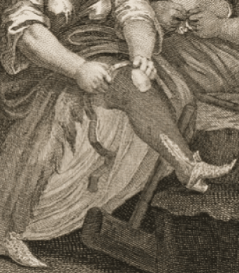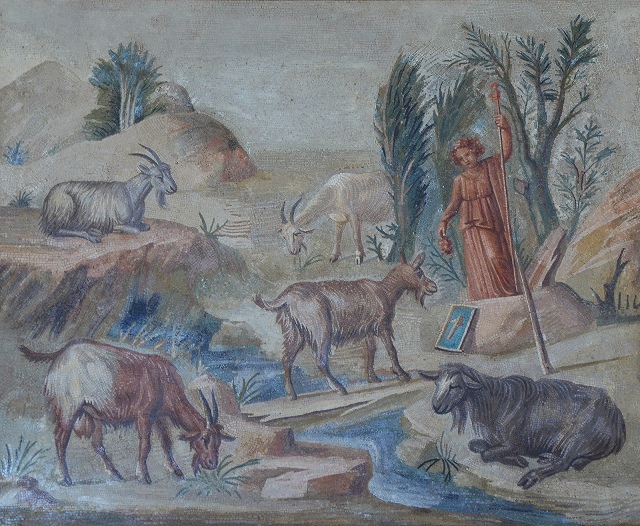In an effort to share more of our favourite ancient objects from around the world, Ancient History Encyclopedia staff have taken a closer look at some really amazing objects or structures. Today’s Object in Focus is the Meroe Head of Augustus.
Latest Posts
Recommended Blogs: History and Archaeology
While we think Ancient History etc is one of the best Ancient History Blog out there. We also acknowledge there are many other places our readers might enjoy getting their history fix. That is why we have put together this list of recommended blogs that the team of AHetc follow in their spare time.
Ancient Foods
Since the dawn of time, we have always thought about our next meal. Ancient Foods is a blog that studies what we ate back in ancient times and how we caught or cooked it.
Dirty, Sexy History
 This blog explores some of the issues that have continued to be controversial over time such as marriage, rebellion, health and slavery.
This blog explores some of the issues that have continued to be controversial over time such as marriage, rebellion, health and slavery.
Classics Confidential
As the tagline of this blog suggests, each post contains a vodcast on various topics relating to the classics Greek and Roman eras. The vodcasts about ancient Literature and Music are a particular favourite of the Ancient History Etc team.
Heritage Trust
The Heritage Trust blog is a space to examine heritage sites, artefacts, skills and traditions that are being damaged or lost through war, neglect, development, vandalism, theft or natural disasters. They also highlighting many of the success stories in the fields of archaeology, conservation and historical research.
Archaeodeath
This blog focuses on new ideas and discoveries in the world of archaeology. Primarily in the mortuary archaeology, archaeological heritage, the Middle Ages, public archaeology and contemporary archaeology.
History Moments
Covering just about every moment in history, from the big bang to new discoveries in the history profession, History Moments has an article about it. If you happen to be looking for something particular check out their index.
Chalice of the Sun
For most ancient peoples, the Sun was more than a celestial body. It was a deity and source of life. However, it was believed this deity only emerged on the horizon during the sunrise and sunset. How did the people in ancient times safely observe an eclipse? One might pour water into a bowl and watch the reflection and that is what they did for thousands of years. Until representatives of the Catacomb archeological culture improved the method.
Marguerite Yourcenar and Hadrian in Bavay (France)
Last year, the Forum Antique de Bavay, located in northern France, hosted a small exhibition devoted to the book Mémoires d’Hadrien (Memoirs of Hadrian).
The exhibition sheds light on the genesis of Mémoires d’Hadrien and presents archaeological objects and ancient texts. It provides insight into the meticulous work behind Marguerite Yourcenar’s historic novel, compiling postcards and photographs of works and places relating to her subject, studying all the ancient sources with a passionate and serious enthusiasm. On display are books, manuscripts, statuary, portrait busts, and coins, as well as different artefacts from the time of Hadrian and the Antonines. Fifty works are on loan from the Louvre, the British Museum, Hadrian’s Villa, the Museum Ingres in Montauban, the Gallo-Roman Museum of Lyon and the Musée Saint-Raymond in Toulouse. It is the first exhibition in France about Mémoires d’Hadrien.
Art from Hadrian’s Villa: Three Mosaic Panels with Bucolic Scenes
This month’s masterpiece from Hadrian’s Villa is a series of heavily restored mosaic panels depicting bucolic scenes with animals.
The first panel depicts a rocky landscape with a flock of goats peacefully grazing by a stream. A standing bronze statue dressed in a long tunic is standing on a rock. It holds a bunch of grapes in its right hand and a thyrsus in his left hand. The statue is probably an image of the god Dionysos meant to evoke a sacro-idyllic landscape. Dionysus was also considered to be a god of fertility and there seems to be a human phallus represented on the tablet next to the statue. The phallus was a symbol of his power, the ability to create new life.
Travel Posts of the Ancient World on AHetc
So many people contribute amazing posts to AHetc about their travels around the ancient world. I recently went through them all and found some posts that feature places I want to visit someday. I’m hoping, that like me, you find some inspiration and ideas looking through them too. To view the posts, click on the accompanying image.
Our Rome visit in Photos
 Everyone loves to see the photos you took when travelling, which is why I adore this post. Earlier this year two of the AHE team, Jan and James, visited Rome to present at a conference. They kindly took a bunch of photos of this ancient world for those of us that couldn’t go with them.
Everyone loves to see the photos you took when travelling, which is why I adore this post. Earlier this year two of the AHE team, Jan and James, visited Rome to present at a conference. They kindly took a bunch of photos of this ancient world for those of us that couldn’t go with them.
Read More
March 2017 Museum Exhibitions
Every month, Ancient History Encyclopedia will share news about select museum exhibitions and events of interest to our global audience via AHetc. Exhibitions are arranged in alphabetical order by geographical location and region within this post: the Americas, United Kingdom, Europe/Middle East, and East Asia/Oceania. Here is a taste of what is on show at major museums around the world in March 2017:
The White Obelisk of Ashurnasirpal I
In July 1853, Hormuzd Rassam was excavating an area at the ruins of the mound of Kuyunjik (Nineveh, Mesopotamia, modern-day Mosul Governorate, Iraq), one of the most important cities in the heartland of the Assyrian Empire. The area was an open space between the outer court of the palace of the Assyrian King Sennacherib and the Ishtar Temple. About 200 feet northeast of the palace, Rassam dug a trench that went down about 15 feet from the surface of the mound. At this point, his workmen found a large, 4-sided, monolith pillar; it was an obelisk, somewhat whitish in colour. The obelisk was lying on it sides. An artist, C. D. Hodder, who accompanied Rassam on his expedition, made drawings of the 4 sides of the obelisk in situ. It is now known as the White Obelisk of Ashurnasirpal I and housed in the British Museum.
Vikings: Life and Legend
The British Museum’s first blockbuster exhibition in their new temporary exhibition gallery received plenty of publicity, mostly about the arrival of the longest Viking longship ever discovered – or at least, the 20% of its wooden frame that survives, plus a reconstruction of the rest – from Denmark. A new gallery, a giant longship, and Vikings! How could a group of Classicists resist…?
Zurich’s Great Museums
On a recent business trip to Zurich, I had the opportunity to tour two of the city’s great repositories of Swiss history and culture: the Museum Rietberg and the Landesmuseum Zürich (English: Swiss National Museum). Both house sumptuous works of art and special rotating exhibitions.





